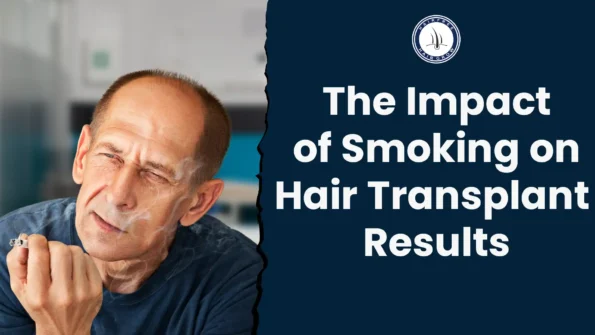You’ve probably heard it many times: smoking is unhealthy. But when it comes to discussing the impact of smoking on hair transplant results, it becomes even more critical. As doctors, convincing patients to quit smoking, especially after a hair transplant, is incredibly challenging. Even switching to nicotine gums or dermal patches isn’t enough to mitigate the risks associated with smoking post-procedure. The harmful effects come not only from the chemicals in tobacco smoke but also from nicotine and carbon monoxide, both of which negatively impact hair transplant outcomes. Hair transplant smoking can slow down healing and affect your results.
Why Smoking Affects Hair Transplant Results
Nicotine and Its Effects
Nicotine is found in all tobacco products and their substitutes, like gums and patches. While these substitutes might help someone quit smoking over time, they don’t remove the local and systemic effects of nicotine. Nicotine, the addictive component in cigarettes, acts as a potent vasoconstrictor, meaning it narrows blood vessels and reduces blood flow to the scalp. This reduced blood flow hampers the healing process and the survival of the transplanted grafts.
In contrast, minoxidil, a common hair growth stimulant, is a vasodilator. It expands blood vessels, increasing blood flow to the scalp. Nicotine’s effect on hair growth is the opposite of minoxidil’s.
Carbon Monoxide’s Role
Carbon monoxide, another byproduct of tobacco smoke, competes with oxygen in the blood. This competition reduces the amount of oxygen available for the scalp, leading to tissue hypoxia. Tissue hypoxia is a condition where the tissue doesn’t get enough oxygen, which is crucial for the survival of hair grafts and the healing process.
Facts and Figures
Studies show that even as few as two cigarettes a day can reduce peripheral blood circulation by 9 to 55 percent. Clearly, nobody wants to risk their hair transplant results. When a patient who smokes walks into my clinic, I inform them of these facts and discuss how smoking can hinder the procedure and recovery.
Preparing for a Hair Transplant as a Smoker
If a patient smokes around five cigarettes a day, I advise them to cut down to two cigarettes a day and completely stop smoking for at least three weeks (one week before and two weeks after the procedure). Light smokers often follow this advice without much difficulty.
However, heavy smokers (those who smoke 20 or more cigarettes a day) find it easier to reduce to 15 cigarettes but struggle to cut down to 10. These patients often lack motivation and are at high risk of returning to heavy smoking. For them, I postpone the hair transplant until they have reduced to 10 cigarettes a day.
I only plan a hair transplant when a heavy smoker has reduced to five cigarettes a day and agrees to limit it to two cigarettes a day for three weeks (one week before and two weeks after the procedure). This reduction can be achieved with the help of a psychiatrist who provides confidential support and medication to manage cravings.
Risks Associated with Smoking and Hair Transplants
Stopping smoking at least a week before surgery reduces the risk of excessive bleeding during the procedure. Smoking weakens the immune system, leading to slower healing and a higher risk of infection. Additionally, smokers are more prone to hypertrophic scarring, resulting in prominent scars in the donor area.
Conclusion
Smokers might enjoy their habit, but it significantly shortens their lifespan. My goal is to ensure you have a successful hair transplant and encourage you to lead a healthier lifestyle.
If you’re looking for expert advice and effective solutions for hair loss, contact us at HairFree HairGrow. We’re here to help you on your journey to regaining your hair and confidence.
- Visit any branch for your hair problem or call us at +91-72 72 83 2222
- We are located in Surat, Pune (Pimple Gurav), Pune (Kharadi), Hyderabad, Ahmedabad, Kolkata, Indore, Bhopal, Delhi (Gurugram), Nagpur, Mumbai, Vapi (Silvassa), and Bangladesh.
Written By
MD (Skin & VD)
Dr. Santpal Sangwan is a hair restoration specialist with expertise in hair transplant smoking effects. He offers expert guidance on minimizing smoking-related risks to ensure successful hair transplant results and optimal recovery for his patients.
Disclaimer
We’ve made all possible efforts to ensure that the information provided here is accurate, up-to-date and complete, however, it should not be treated as a substitute for professional medical advice, diagnosis or treatment. See Detailed Disclaimers Here.


